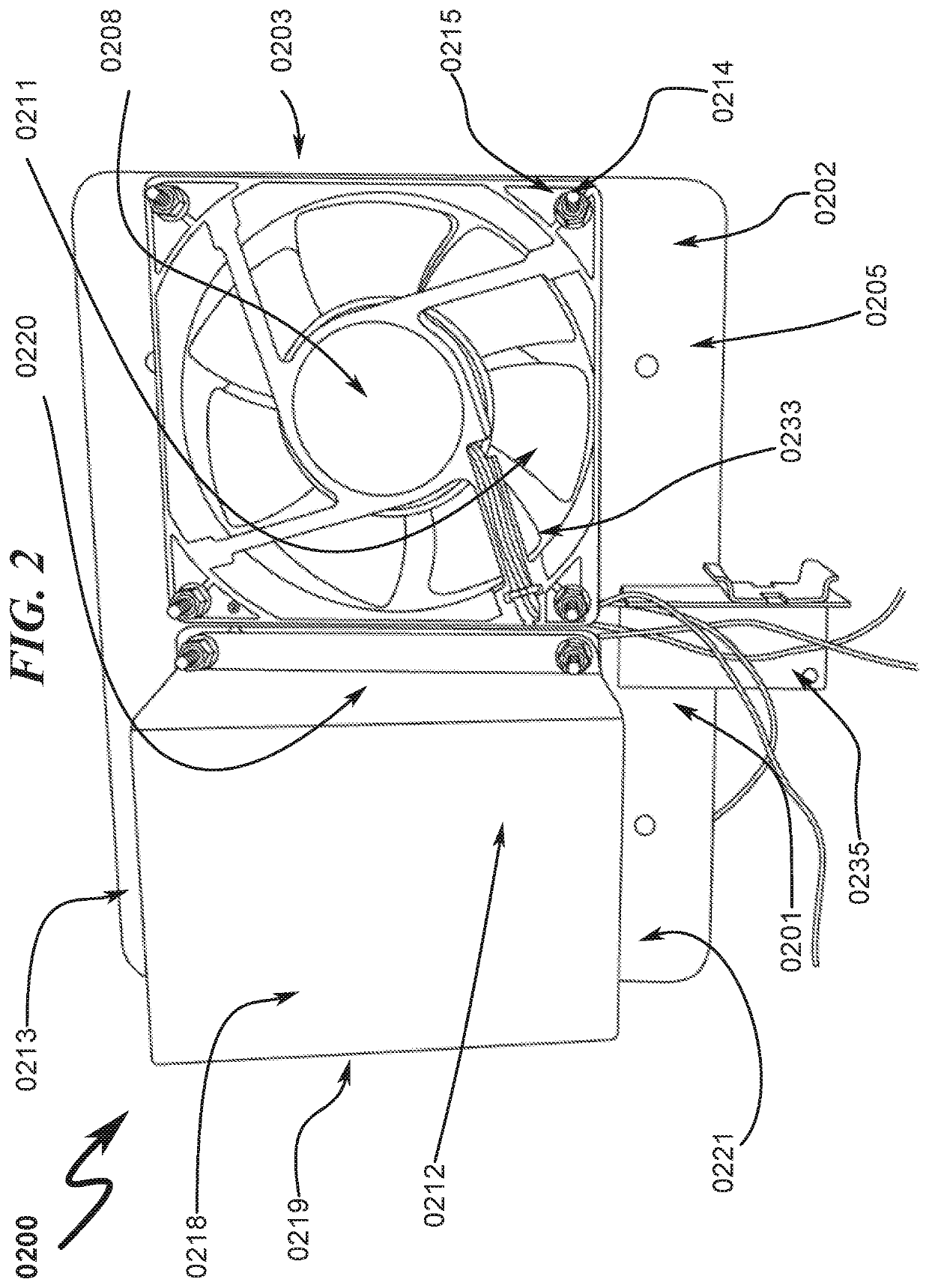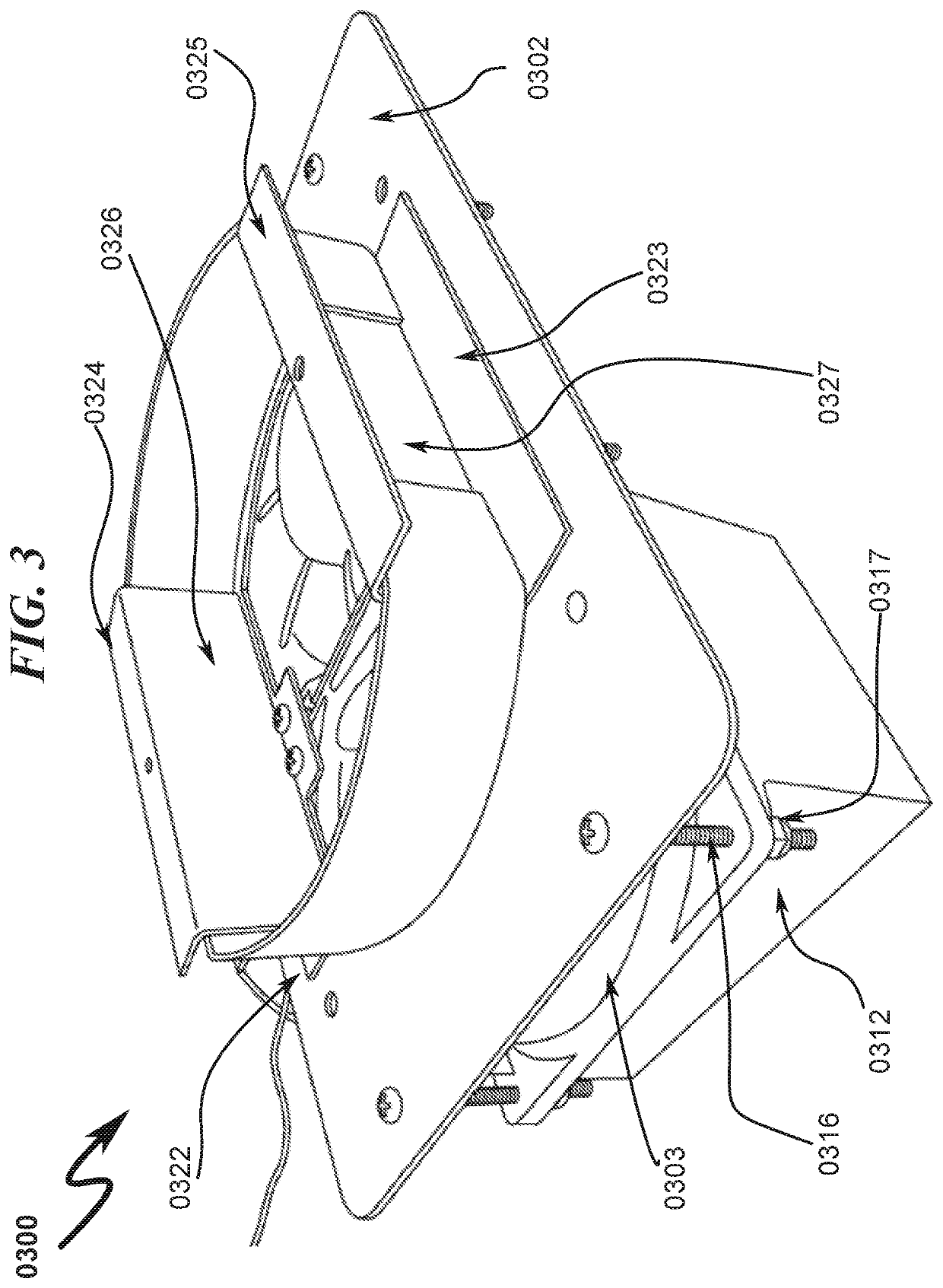Rear partition mounted cooling system
a cooling system and rear partition technology, applied in vehicle heating/cooling devices, vehicle components, transportation and packaging, etc., can solve the problems of increasing the speed of degradation, affecting the performance of equipment, and affecting the operation of equipment, so as to achieve the effect of reducing the damage to equipment stored
- Summary
- Abstract
- Description
- Claims
- Application Information
AI Technical Summary
Benefits of technology
Problems solved by technology
Method used
Image
Examples
Embodiment Construction
[0029]An exemplary embodiment of the invention will now be described. Now referring in general to FIG. 1, set forth is a top view 0100 of an embodiment of the present disclosure 0101 that is an environmental control apparatus for use in a vehicle having a cargo area and an environmentally controlled passenger area with a deck or partition between the passenger and cargo areas. The apparatus of the exemplary embodiment of the present disclosure having a mounting plate 0102 and a fan unit 0103 that includes at least one fan. The fan unit(s) 0103 having at least one motor corresponding to the at least one fan(s). The mounting plate is constructed of any rigid material and has an upper surface 0104 and a lower surface 0205, which is further illustrated in FIG. 2. In the center of the mounting plate 0102 is a large centrally located aperture 0106. The fan unit 0103 has illustrated in the exemplary embodiment a first fan 0107 and a second fan 0108, which are located underneath the lower s...
PUM
 Login to View More
Login to View More Abstract
Description
Claims
Application Information
 Login to View More
Login to View More - R&D
- Intellectual Property
- Life Sciences
- Materials
- Tech Scout
- Unparalleled Data Quality
- Higher Quality Content
- 60% Fewer Hallucinations
Browse by: Latest US Patents, China's latest patents, Technical Efficacy Thesaurus, Application Domain, Technology Topic, Popular Technical Reports.
© 2025 PatSnap. All rights reserved.Legal|Privacy policy|Modern Slavery Act Transparency Statement|Sitemap|About US| Contact US: help@patsnap.com



